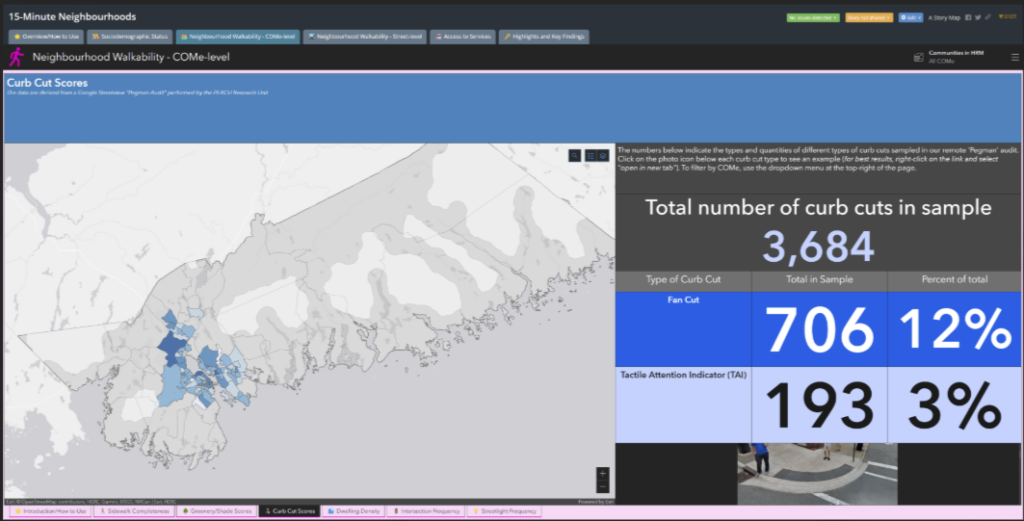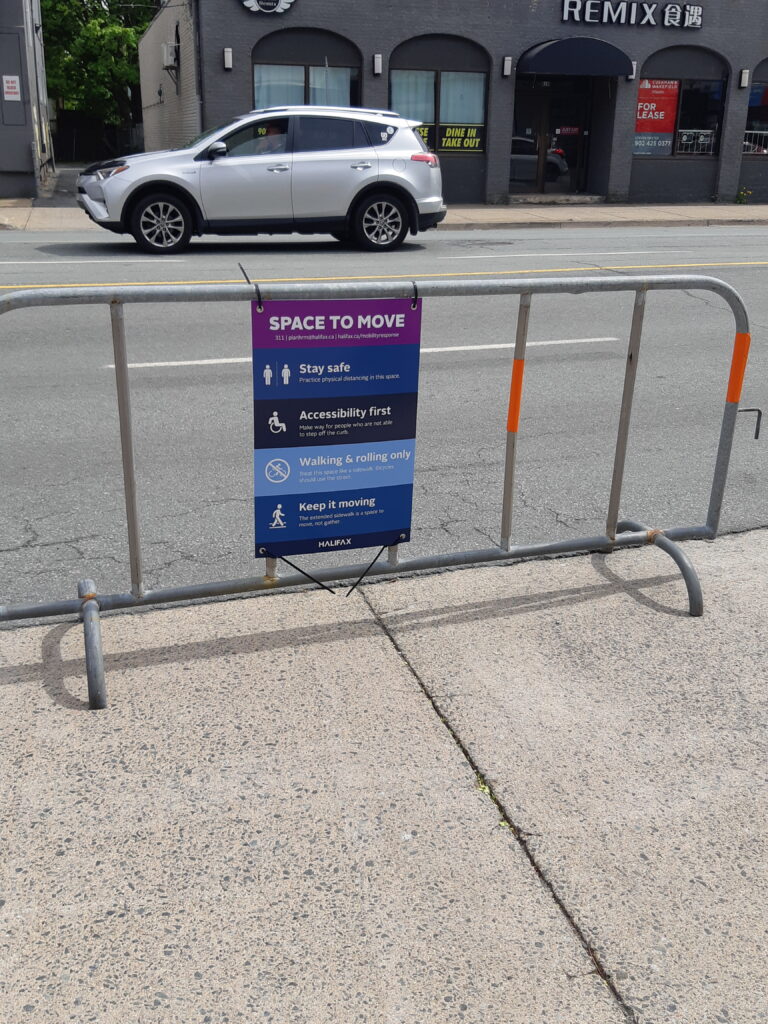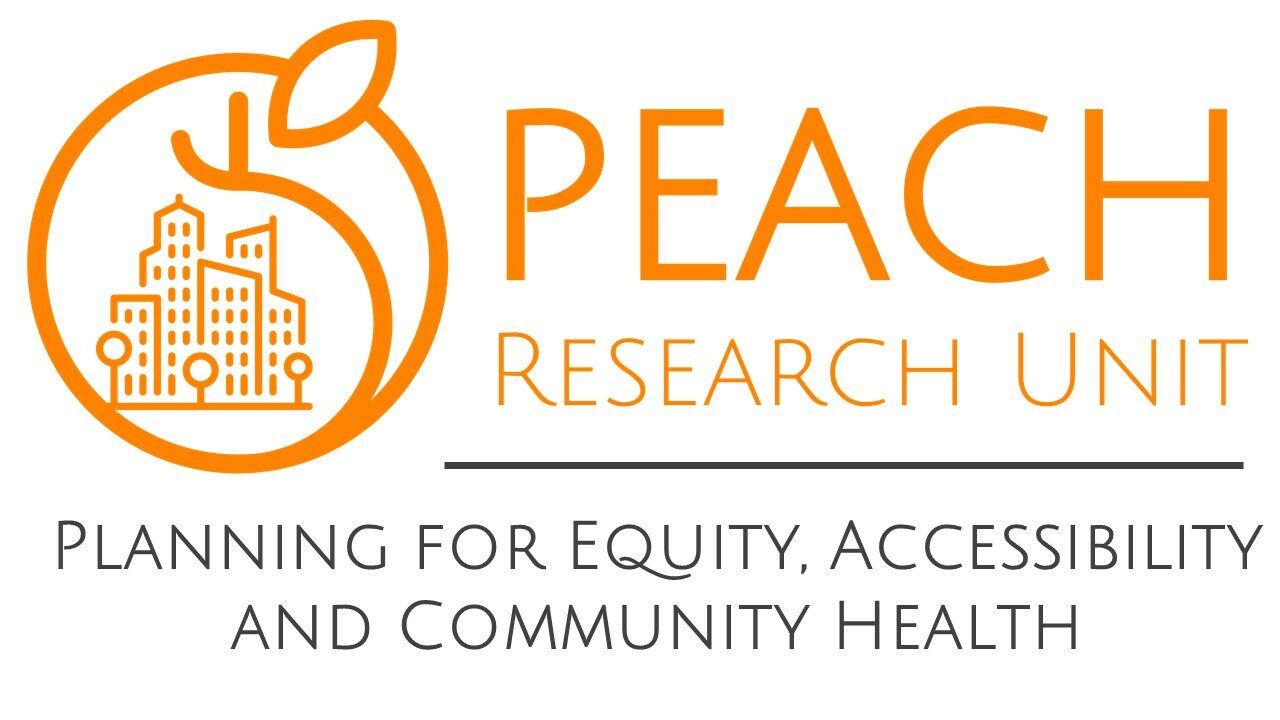‘Staying Put and Staying Well’: 15-Minute Neighbourhood Indicators
This research project, entitled 15-Minute Neighbourhoods as a Framework for Staying Put and Staying Healthy During the COVID-19 Pandemic, was undertaken in partnership with the Nova Scotia Department of Municipal Affairs and Housing, and funded by the SSHRC Partnership Engage (PEG) COVID-19 Special Initiatives Grant. The ‘15-Minute Neighbourhood’ concept – where residents live within a 15-minute walk to daily goods, services, and amenities –has been used to identify and assess key indicators in the built environment that facilitate access to daily needs for residents staying close to home and within their home communities. We use Halifax Regional Municipality (HRM) as a case study, demonstrating results for 117 community areas.

The 15-Minute Neighbourhood Dashboard
The data collected and analyzed from this project are presented in a series of interactive maps and graphs on an online dashboard.
View the video below for a tutorial on how to navigate the dashboard tabs and features.
Click the button above to go to the ’15-Minute Neighbourhoods’ Online Dashboard!

Background: What do 15-Minute Neighbourhoods have to do with COVID-19?

Across Canada, the COVID-19 pandemic crisis led to some unprecedented public health emergency measures to contain the virus spread, including social/physical distancing, closing of non-essential services, and limiting use of public spaces such as parks, beaches and hiking trails to prevent large assemblies of people. While necessary, these measures have been recognized as restricting opportunities for individuals to manage their health and well-being and research has reported increased feelings of loneliness and isolation, anxiety and depression, and incidence of domestic violence in the population during the time of these restrictions. Residents who are older or live with disabilities have experienced greater challenges in coping with the restrictions. To tackle these challenges, some municipal planning departments implemented temporary measures to modify the neighbourhood built environment, such as placing pilons to create temporary walking paths and restricting automobile traffic in residential areas to enable walking in busy streets (see image, left).
The pandemic also renewed interest in the ‘15-Minute Neighbourhood’ concept as a way to assess neighbourhood preparedness to meet the needs of persons staying close to home. 15-minute neighbourhoods have been considered in planning as an ideal type of neighbourhood where residents of all ages and abilities can access goods and services – including health care and essential services, recreation spaces, and social, leisure spaces (when appropriate) – within a short (15-minute) walking distance. The diversity of pedestrians has not always been considered through this topic, so our team has tried to apply an inclusive lens when assessing measures, including the quality of curb ramps, and varying walking speeds appropriate for different groups of persons.
Since the ‘second wave’ of COVID-19, our team has been collecting and assessing indicators of community preparedness based on the 15-minute neighbourhood concept for communities within Halifax Regional Municipality. It is our aim for this data to be used to inform short-term and long-term planning interventions to ensure communities are set up to serve the needs of all residents generally and in emergency situations. Through this research we have also come across limitations in the ’15-minute’ framework, which we expect to explore further. Results of this project are posted on the dashboard above, which shows the indicator scores by community environ (COMe) in HRM. To learn more about COMe’s, please go to our Community Environs page.
